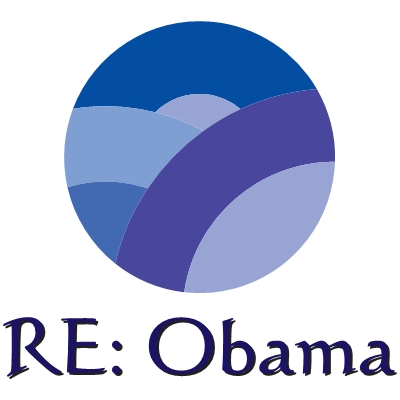The White House
Office of the Press Secretary
Fact Sheet: Doubling the Amount of Commercial Spectrum to Unleash the Innovative Potential of Wireless Broadband
**Background Conference Call Today at 11 am**
Today, President Obama signed a Presidential Memorandum to commit the Federal government to a sustained effort to make available 500 MHz of Federal and commercial spectrum over the next 10 years to foster investment, economic growth and help create hundreds of thousands of jobs by meeting the burgeoning demand for mobile and fixed broadband, other high-value uses and benefits for other industries.
There will be a background conference call today at 11 am.
WHAT: Background conference call on spectrum
WHO: Jason Furman, Deputy Director of the National Economic Council
WHEN: Today, Monday, June 28, 2010
11:00 am EDT
DIAL-IN: Participant dial in (800) 398-9379 begin_of_the_skype_highlighting (800) 398-9379 end_of_the_skype_highlighting, no code necessary.
If prompted, ask to join the “White House Conference Call”
CALL WILL BE ON BACKGROUND
The Presidential Memorandum is part of the broader approach to free up spectrum that also includes legislation to facilitate this transition – the most significant spectrum initiative ever undertaken in this country – by providing incentives to commercial and Federal users to use spectrum more efficiently. This effort will nearly double the amount of commercial spectrum currently available for everything from smartphones to wireless broadband connectivity for laptops to new forms of “machine-to-machine” communication. It will bring the benefits of wireless broadband and the opportunities it fosters across the entire country, including rural areas. The Administration has no official estimate of the auction revenues from this plan. The actual amount will depend on effective implementation and additional design details, but based on past auctions, many analysts believe the revenue potential could reach in the tens of billions of dollars. The proceeds would be invested in public safety, additional job-creating infrastructure investments and deficit reduction.
The threat of a spectrum crunch. In recent years, the amount of information flowing over some wireless networks has grown at over 250 percent per year, with some estimates indicating that the next five years will see an increase in wireless data of between 20 and 45 times 2009 levels, reflecting the increasing use of smartphones, netbooks, and other wireless devices. As the revolution in mobile broadband and related technologies unfolds, the demand for spectrum will continue to increase – leading to increasing fears of a “spectrum crunch.”
Freed up spectrum will foster job creation, innovation and growth. The majority of the freed-up spectrum would be auctioned for mobile broadband and other high-value uses. New spectrum access innovations also will allow for sharing of spectrum between the government and private sector users. In addition, there will be new opportunities for innovation through free, unlicensed use of spectrum by technology startups, individual users, and others.
Potential for win-win solutions. At the same time, new technologies have the potential to free up spectrum from many of its existing uses. In combination with regulatory changes, new and emerging technologies can facilitate the repackaging, reallocation, and even sharing of spectrum. Reallocating spectrum to its most valuable use promises to be a win-win effort – creating value that not only spurs new innovations and creates new jobs, but also benefits existing spectrum users by allowing them to raise funds for transformative new investments.
Auction revenues will allow additional investments in public safety and infrastructure. Finally, a critical part of this spectrum initiative will be to provide funding to help build a nationwide interoperable mobile broadband network for public safety. This network would include “next generation” technologies of the kind already being used by major American enterprises and be tailored to meet public safety’s needs. Additional revenues above and beyond the federal investment necessary to make this network a reality could be invested in productivity-enhancing investments like NextGen air traffic control, high-speed rail, or the Smart Grid as well as used for deficit reduction.
Specifically, the Administration is announcing a four-point plan:
1. Identify and plan for the release of 500 MHz of spectrum. The first step is to initiate the administrative process for identifying spectrum that can be repurposed. Critical to that end:
- Presidential Memorandum setting the goal. President Obama issued a Presidential Memorandum directing the National Telecommunications and Information Administration (NTIA), in collaboration with the Federal Communications Commission (FCC), to make available 500 MHz of Federal and nonfederal spectrum over the next 10 years, suitable for both mobile and fixed wireless broadband use.
- Fast track process for a downpayment. NTIA, working with the FCC, has initiated a fast-track process to determine whether any spectrum can be identified by October 1, 2010, that could be made available within five years for exclusive or shared use.
- Inventory the current users of spectrum. To that end, the federal government will create a publicly available inventory of the spectrum currently used by government and commercial users on a separate track from the NTIA and FCC processes to make spectrum available for new uses. Although this inventory is not necessary to enable the repurposing of large swaths of spectrum, this inventory will enable spectrum holders and consumers to better understand how spectrum is used and facilitate more effective secondary markets transactions, thereby supporting the policy goal of ensuring the most efficient possible use of spectrum.
2. Provide the tools needed to effectively reallocate spectrum. New tools are needed to effectively reallocate spectrum.
- Win-win incentives for government holders. New tools and a commitment to using advanced technologies more effectively will enable government agencies to use spectrum more efficiently. Under current law, the Federal agencies whose spectrum is reallocated are reimbursed for the costs of relocating systems to retain comparable capabilities. The President is seeking broader tools that would give Federal agencies upfront planning and research funds and allow agencies to use a portion of the proceeds to enhance state-of-the-art communications.
- Win-win incentives for commercial holders. There is a compelling opportunity to provide win-win incentives for commercial spectrum holders. As recommended in the FCC’s National Broadband Plan, legislation is needed to allow the FCC to conduct “incentive auctions” that enable current spectrum holders to realize a portion of auction revenues if they voluntarily participate. Under such a process, the FCC would reorganize the released bands of spectrum in a way that facilitates their most productive use – resulting in gains for incumbent spectrum holders, new licensees of the released spectrum, consumers who use the new services made possible by the released spectrum, and the federal Treasury.
3. Enable spectrum to be put to its highest value uses. The result of the first two steps will be to enable spectrum to be used more intensively and to be put to its highest value uses. Specifically:
- Licensed mobile broadband. The majority of the spectrum this will free up will be auctioned off for licensed mobile broadband.
- Unlicensed use. Some spectrum will be made available for free for unlicensed use by technology startups, small businesses and others that benefit from the low barriers to entry and fast time to market. Unlicensed use has played an important role in everything from cordless phones to WiFi to Bluetooth and providing additional spectrum will enable new generations of uses that we cannot even foresee today.
- Invest in better ways to share spectrum. Emerging wireless technologies are enabling dramatic improvements in the use and sharing of spectrum. Working alongside academic and private sector researchers, Federal R&D agencies like DARPA and the National Science Foundation have been developing techniques that enable many different wireless devices to use occupied airwaves without disrupting high-priority uses. As called for in the Presidential Memorandum, NTIA, in consultation with Federal research agencies, will work to facilitate R&D that explores innovative spectrum-sharing technologies.
4. Use the auction proceeds to promote public safety, job-creating infrastructure investment and deficit reduction. The Administration has no official estimate of the auction revenues from this plan. The actual amount will depend on effective implementation and additional design details, but based on past auctions, many analysts believe the revenue potential could reach in the tens of billions of dollars, including revenue from spectrum that is currently cleared and set to be auctioned by the FCC. The proceeds would be invested in three areas:
- Public safety, as part of a process to assess spectrum requirements for and develop a governance model to support an interoperable wireless broadband network for public safety. Using Federal proceeds from spectrum auctions, the Administration will work with the public safety community to develop a plan and help build an interoperable wireless broadband network for public safety that includes “next generation” technologies – similar to those already used by major American enterprises, but tailored to meet public safety needs. Specifically, the Administration will evaluate and convene a forum to discuss the funding, spectrum requirements, technology issues, and governance models necessary to support the development of a next generation network for public safety communications.
- Additional investments in growth-enhancing infrastructure. Additional proceeds from spectrum auctions could be invested in growth-enhancing infrastructure, like NextGen, high-speed rail, and a Smart Grid.
- Deficit reduction. Finally, additional proceeds could be used to reduce the deficit.
DETAILED BACKGROUND
Mobile Broadband: New Opportunities for the American Economy
Mobile broadband technologies enable consumers and businesses to access unprecedented amounts of voice, data, and video applications through wireless networks. Demand for commercial wireless data services that are secure and reliable is expected to increase exponentially in the next decade as new services and technologies develop. This explosion of new services and technologies will be a boon to the economy, with experts estimating total social benefits of over $1 trillion over many years.
- As consumers use wireless-enabled devices to access video and other high-bandwidth content, the demand for data over wireless networks is expected to grow exponentially. Analysts predict that mobile secure data use will increase 40-fold over the next five years. Mobile Internet users are expected to outnumber desktop Internet users by 2014.
- Wireless broadband connectivity will enable applications in health care (e.g., remote monitoring), energy (e.g., Smart Grid and home appliance networks), education, public safety, and government performance (e.g., customer services applications). By 2013, the expected over 20 billion downloads from mobile application stores will constitute a $30 billion industry—one made possible by the widespread popularity of smartphones and mobile broadband connectivity. In addition, with the advent of “machine-to-machine” communications, new services and technologies are likely to use spectrum in ways that have yet to be invented.
- The economic benefits of mobile broadband are estimated to be significant. According to a recent study, GDP can increase $7 to $10 for every dollar invested in mobile wireless broadband networks. Wireless providers directly employ more than 268,000 people, a number that has grown about 6 percent year-over-year for the last four years. Moreover, mobile wireless broadband generates huge productivity gains to the U.S. economy; some estimate that those benefits are valued at $28 billion per year and rising, with combined mobile wireless voice and broadband productivity gains set to reach $427 billion annually by 2016.
- The use of wireless technology is growing at a very robust pace, with AT&T, in part due to its iPhone rollout, reporting a 5000 percent increase in wireless data traffic over the past three years – a compound annual growth rate of 268 percent.
- In the last major spectrum reallocation from 1994 to 2000, FCC auctions more than tripled the amount of spectrum available for commercial mobile radio services, transforming the mobile industry and spurring massive new investment. Over this time period, the number of mobile subscribers more than tripled, and the mobile industry saw an increase in investment of more than 250 percent and a tripling of jobs.
Importantly, mobile broadband promotes economic opportunity by reducing geographic and socioeconomic differences in broadband access and adoption – commonly known as the “digital divide”:
- Currently only 50 percent of adults in rural households have broadband access at home, compared to 68 percent in non-rural households. Because wireless broadband is more cost effective than terrestrial broadband in some rural areas, freeing up spectrum will create a larger and more effective market for mobile broadband, bringing down costs and raising quality in a way that creates opportunities for unserved areas as well.
- In addition, mobile broadband is helping to close the socioeconomic digital divide by encouraging broadband adoption among minority communities who have traditionally had much lower adoption rates. A recent study found that the number of African Americans using the mobile Internet on an average day increased from 12 percent in 2007 to 29 percent in 2009, a 140 percent increase in just two years.
- Freeing up spectrum is a critical tool to enable competition in broadband services. Such competition and increased consumer choice will allow currently underserved customers, especially those in rural areas, to benefit from lower priced and higher quality broadband offerings – not only for wireless but also for wired connections that will be forced to upgrade.
Additional Spectrum is Needed to Enable a New Generation of Services and Technologies
Mobile broadband devices access data through frequencies that are part of the electromagnetic spectrum. As demand for mobile services skyrockets, so too will the need for additional spectrum frequencies to facilitate this transformation. Without a strategy for freeing up more spectrum for wireless technology, the United States will fall behind in technological innovation and 21st-century jobs as cutting edge applications and technologies that depend on broadband wireless platforms are invented in countries with more advanced wireless infrastructure. Acting quickly will help the United States remain competitive:
- Experts believe that wireless data services will require hundreds of MHz of spectrum in coming years, but the United States has only 50 MHz of spectrum in the pipeline for commercial use.
- Since reallocation of spectrum can take 6 to 13 years, the United States must act now to be part of the upcoming transformation of the global economy.
Technological Advances and Updated Regulations Can Free Up Spectrum from Existing Uses
- Technological advances, combined with an updated regulatory framework, make it possible to free up currently underutilized spectrum for new and emerging uses. Reallocation promises a win-win scenario, benefitting current users, new users, and consumers. Notably, technological advances and regulatory changes make it possible to free up spectrum while protecting current uses:
- The lack of efficiently used spectrum is particularly unfortunate in rural areas where large swaths of spectrum can be freed up with relative ease. Enabling large swaths of spectrum to be put to use in those areas promises the ability to deliver high speed services effectively, as is already happening in some areas through innovative uses of wireless broadband technology.
- New technologies have made it possible to use government spectrum more efficiently while protecting critical activities like national defense, homeland security, and air traffic control. Where appropriate, a “sharing” arrangement, for example, can authorize a commercial provider to use a band of spectrum at most times, but stipulate that government communications or other critical activities will take over when they need access to the band. Certain smart radio technologies are already being used by the Pentagon. Several initiatives, such as DARPA’s XG Program and NSF’s Enhancing Access to the Radio Spectrum (EARS) initiative, are working on advanced sharing technologies for both national security and commercial applications.
- Some spectrum licensees and government agencies received their right to use the airwaves before alternative services, such as fiber networks, commercial wireless services, and the Internet, were available. Reallocation can therefore create win-win transactions whereby a spectrum licensee raises revenue and transitions to comparable or superior communications technology while freeing up spectrum for use by others.
- Technological advances and regulatory changes can also improve the efficiency of commercial spectrum use. For example, current broadcast TV rules provide each licensee with a six-MHz channel, but, under a reformed regulatory structure, the FCC could give broadcasters the option of combining more than one TV stations into a single channel that could handle more than one program simultaneously, freeing up spectrum for new uses.
- In addition to sharing, new technologies are emerging that minimize interference between the signals in neighboring spectrum bands. This reduces, for example, the need for so-called “guard bands,” with the result that spectrum can be repackaged and used more efficiently than ever. As both a user and regulator of spectrum, the Federal government can encourage improvements to “interference mitigation” technologies.



